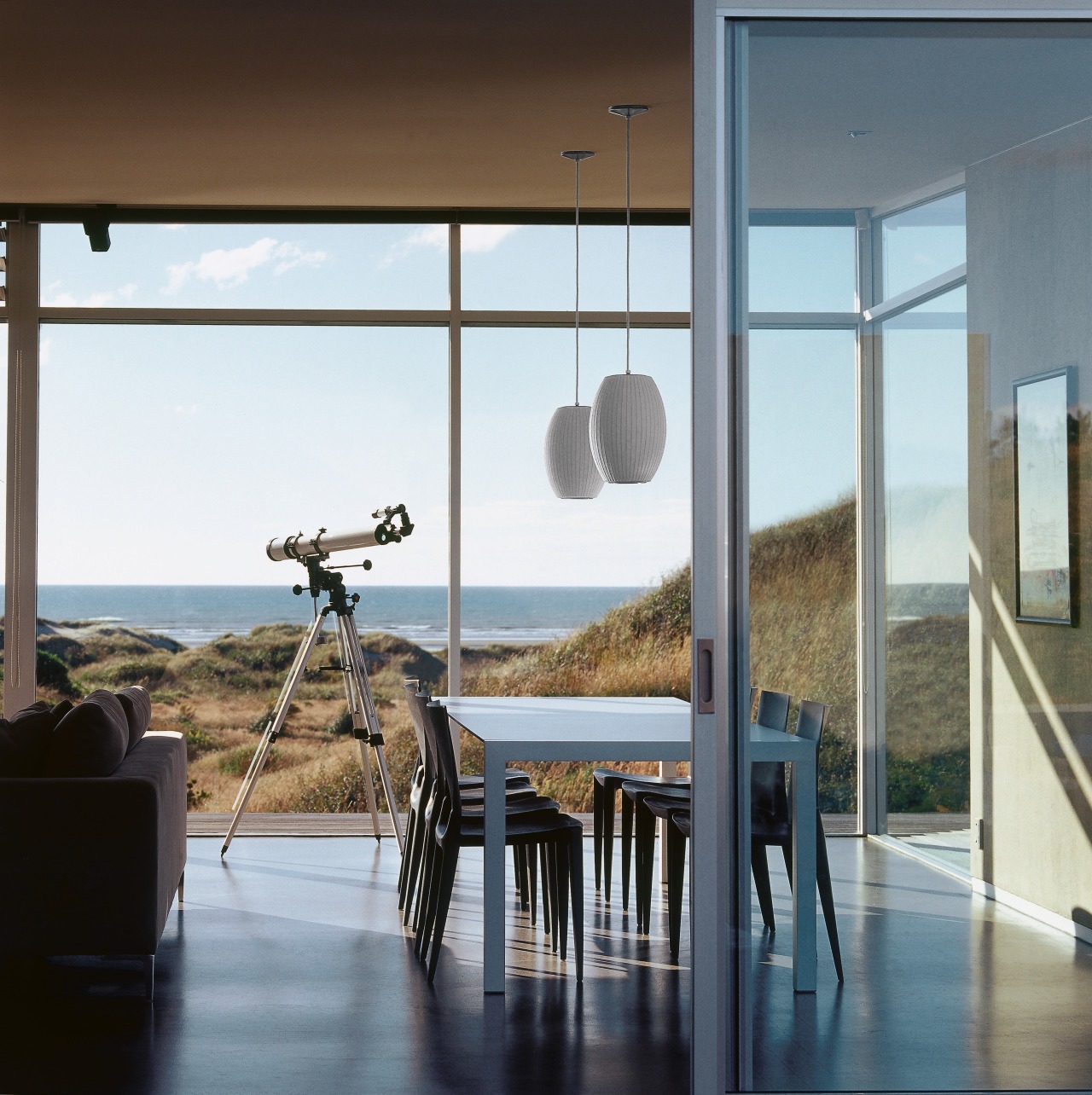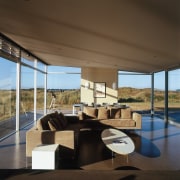On the beach
Nestled amid the tussock and the sand dunes, this contemporary beach house is at one with the landscape

Some beach houses are designed to make a statement their sheer size and imposing facades command attention. But grand gestures were never part of the brief for the owners of this new holiday home. Just the opposite in fact.
Designer Phill Jones says the owners wanted a very private retreat a house that would tuck into the landscape so it was almost camouflaged among the tussock grass and sand dunes.
"For this reason, the top of a sand dune was knocked off to create a flat building platform that would allow the house to nestle on the knoll."
In keeping with the desire for an unobtrusive building, the house effectively turns its back to the road. The only glimpse of the building, which is at the end of a 100m lane, is a large, concrete panel wall, reminiscent of a bunker.
"The concrete panels, and the long driveway through the tussock, heighten the sense of anticipation," says Jones. "It is not until you drive right up to the building and around the side of the wall that the house gradually reveals itself."
On the sea side, however, the house opens up to the views, with an offset butterfly roof enhancing the visual connection with the landscape.
"It was important to keep the house as low as possible, to convey the sense of a house hunkered into the land," says Jones. "The low profile also helps ensure the winds sweeping off the lake flow over the top of the house. But the raised roof line allows for more light and better views, and creates a feeling of being at one with the surroundings."
To reinforce this connection, timber deck platforms appear to float above the sand dunes, with no railings to interfere with the view. The platform on the northwest side of the house reaches out towards a man-made lake.
"From inside the house, it looks as though the deck meets the edge of the lake," says Jones.
Not surprisingly, maximising the outlook was a priority. In addition to the picturesque sea and lake views, there are views of a nearby village, and distant mountains can be glimpsed above the concrete wall.
The owners, who designed the original concept for the house, specified just three main materials concrete, glass and steel. The expansive glazing creates unexpected sight lines throughout the house, each capturing a different slice of the view.
Louvre windows and doors on all sides of the house ensure there is plenty of cross ventilation. They also enable the owners to effectively close one side of the house to the wind if need be. Similarly, having three decks ensures there is usually a sheltered spot for outdoor living.

Jones says the simple, low-maintenance interior belies the complex architectural detailing behind the scenes. This includes an aluminium strip providing negative detailing at the bottom of the walls, so they appear to float above the floor.
To ensure the polished concrete flooring wouldn't crack due to settlement or earthquakes, two floor slabs were poured, with internal walls bolted to the lower of the two slabs.
The clean lines are enhanced by a seamless ceiling that appears to flow from one room to the other. Structural beams supporting the roof are concealed within the ceiling, just as structural steel supports are hidden within the aluminium joinery. These ensure the expanse of glass in the living area is as large and uninterrupted as possible.
Keeping to the minimal material palette, the kitchen features flush, lacquered cabinets and a solid concrete island benchtop. Jones says that at 3.5m long and 1.2m deep, the island has both a functional and social role to play it is a gathering place for family and friends to sit and socialise while meals are prepared.
Credit list
Structural engineering
Flooring
Lighting
Audiovisual equipment
Refrigeration
Shower fittings
Tiles
Story by: Trendsideas
Home kitchen bathroom commercial design











